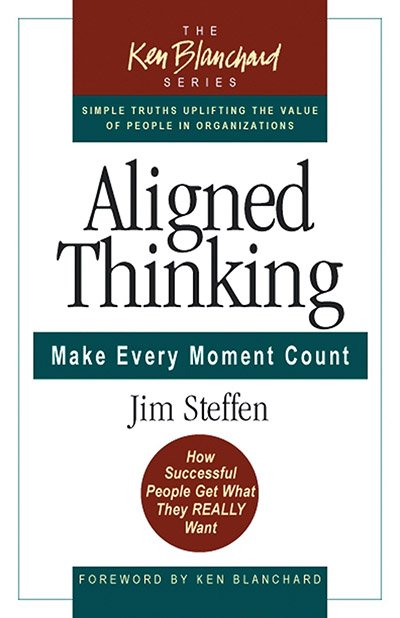Trade Time Management for Priority Management to Boost Success
Priority management and time management are not the same thing. Do you know the difference?
Have you fallen into the “Time Management” trap? Are you always trying to maximize your time, working on different systems to manage it, control it, and try and make more of it?
Stop.
Time doesn’t need managing. Time is the one constant in our lives. We each get 24 hours every day, seven days every week and 365 days each year, plus that extra Leap Day every four years. It never changes, it never varies. Tuesday is not longer than Wednesday or shorter than Thursday. Successful time management is really priority management.
That’s right. It’s not about managing time. It’s about managing your priorities so you have time for the people and activities that are most important to you, and time to enjoy your life. When you focus on managing priorities instead of squeezing out more hours, you can boost your success while lowering your stress.
I’ve read countless articles and books on time management over the years and I have tried many systems. But it wasn’t until I realized I didn’t need to manage time that I began to get a handle on managing my priorities. Once I learned that, things finally began falling into place. I could focus on the things most important to me. I felt like a success. And I had time for my life.
This post contains affiliate links, which means I may earn some money if you click on one and make a purchase. It will not cost you any extra, and I will be grateful for your support. Read the full disclosure here.
Priority Management is the Key
Priority Management means figuring out what is most important to us at any given time and assigning it the priority it deserves. My top priority is my family. On an overall basis, being a wife, mother, daughter, and sister comes ahead of everything else, except for taking care of me. (Though that also fits into family, because I can’t take care of my family if I don’t take of me—but that’s another post,) Even though my family is important, their needs do not always hit the top of my list all day every day. My work is a high priority, but it, too, doesn’t hit the top of the list all day every day.
So, to manage my priorities, I need to know first what those priorities are and then decide which are most important at any given time. Sometimes it is my family, sometimes it’s a creative project, other times a business client, and other times a friend, a household task, self-care, education, relaxation, or even sleep.
Choose Your Priorities Carefully
Like many entrepreneurs, my day is full of varied tasks. The key for me is recognizing which are priorities, which are distractions and which can be dumped or delegated. I am a compulsive list maker. If it isn’t written down somewhere, it doesn’t exist in my world. I use a calendar—and I’ve taught my family to use calendars, I used to make daily to-do lists, and I am a champion of the sticky note. I LOVE sticky notes. They’re everywhere—on my refrigerator, on the wall over my desk, all around my computer monitors, and even on the bathroom mirrors. I am a walking ad for the sticky note.
But back to the to-do list. I rarely make daily to-do lists anymore. After researching and trying many time-management systems with various types of lists and experiencing varying degrees of frustration and stress over unfinished to-do lists that only get longer, I finally found something that works for me, keeps me focused and actually gives me a sense of accomplishment at the end of the day. And it’s NOT a time management system.
Create a Master Project List
I have a master project list. I use Trello (it’s free!) to keep track of all my projects: home maintenance and repairs, client work, creative projects, church assignments, travel, etc. Everything that isn’t a specific calendar event goes on this list. Some of my recent projects include designing photo albums, creating a client website, planning a trip, painting a room, and executing a marketing campaign. Some projects have firm deadlines, others are more flexible . This is not a short list, but in some ways it’s a wish list. I make no restrictions about what goes on this master list.
I rely on my Google Calendar to map out my days and manage meetings and appointments. And I also have a 3-month dry erase calendar on my office wall to help me easily visualize longer-term planning.
Each week I review my calendar and my project list and determine which projects are most important that week. After reviewing my calendar, I can see how much time I have and sanely schedule each day. One of the keys to the success of my system is that, in order to get on my priority list, each project must have a time estimate. Some projects need to be broken down into multiple steps with a time estimate for each step. Others are shorter.
Since I only have a finite amount of time each day, I can easily see when I am overscheduling myself. I can certainly schedule 22 hours’ worth of tasks into a workday, but since my days only have 24 hours and MUST include time for eating, sleeping, household responsibilities and self-care, I know I won’t accomplish 22 hours of tasks each day.
With this system, I have a more realistic schedule and a dramatically lower stress level (most days). At the same time my levels of accomplishment and satisfaction have both increased. This doesn’t mean I always get everything done. When things come up (and they will), I can estimate time needed, decide its priority level, and adjust accordingly.
I do periodically review my list, at least once each quarter. I delete things that no longer fit, and adjust the importance of things that do. But having a place where I can track all my potential projects means I don’t overload my brain trying to remember all my crazy ideas. That would be a lot of brain work for my sometimes-overactive brain flow.
Make Your System Work the Way You Do

There is more to my system. I’m still working on implementing some of it, and other parts I am adapting to meet my own needs. A priority management system needs to work for you. You decide which parts to adopt and which parts to ditch. Remember, there is no one-size-fits-all solution. You are unique and individual and your priority management system needs to reflect that.
I have to confess, this system is not entirely mine. I discovered it in my reading. One day at the library (I’m a huge library fan—you can read about it here) I found a book called Aligned Thinking by Jim Steffen. I liked this book so much I immediately bought my own copy and shared it with my husband. This is just one part of a priority-management system to reduce stress and increase both productivity and free time.
And isn’t that what we all want out of life?
Looking for some help creating a system of your own? Message me here to see how we can create a priority management system that works for you.









